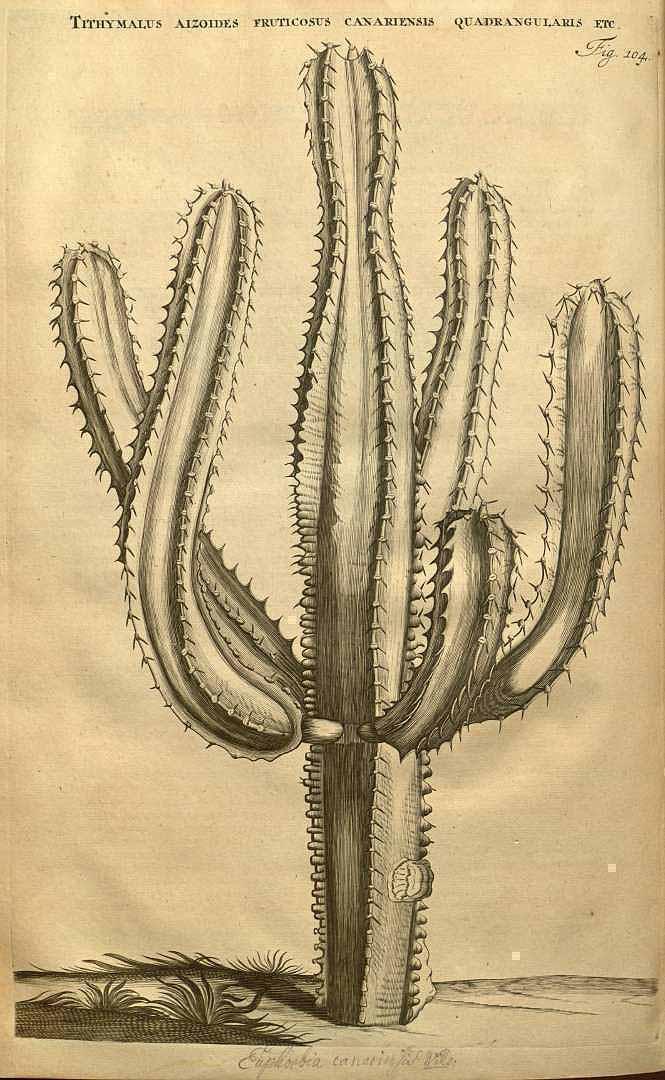Euphorbia canariensis L.
EuphorbiaceaeEspecie endémica del archipiélago canario (excepto de Lanzarote), el cardón un arbusto suculento ramificado cactiforme, que puede superar los 4 m de altura y formar grandes colonias con centenares de tallos y más de 100 m2 de extensión. Se considera uno de los símbolos naturales de la isla de Gran Canaria. El género Euphorbia está dedicado a Euphorbus, médico del rey Juba II de Mauritania; y su epíteto específico alude a su origen canario. Fue descrita por Carlos Linneo en su Species plantarum en 1753.
Como sucede con muchas euphorbias, su látex es tóxico. De hecho, esta toxicidad era bien conocida por los habitantes de las islas Canarias, que lo utilizaban para el “embarrascado”, una técnica de pesca consistente en arrojar ramas cortadas o partidas en charcos para atontar a los peces y pescarlos con mayor facilidad, hoy prohibida. Sus tallos suelen tener de cuatro a seis lados, en las que nacen espinas cortas y curvas, floreciendo en la zona más alta de sus aristas. Se ha popularizado para uso ornamental, pudiéndose hoy encontrar en climas cálidos, especialmente del sur de Europa. Son una especie característica del "cardonal-tabaibal", una formación vegetal mixta típica de las zonas bajas y costeras de las Canarias donde predomina la baja humedad y altas temperaturas, aunque puede llegar hasta los 700 metros de altitud dependiendo de la topografía y orientación. En ella conviven dragos, verodes y cardones.Procedencia
AfricanoCalendario
Hábitat
Morfología
Tipo
 Cactus
Cactus
 Cactus
Cactus
Porte
 Arborescente
Arborescente
h: 1 a 4m
r: 1,00
 Arborescente
Arborescente
Margen
 Pectinado
Pectinado
 Pectinado
Pectinado
Follaje
 Perenne
Perenne
 Perenne
Perenne

 Powered by
Powered by